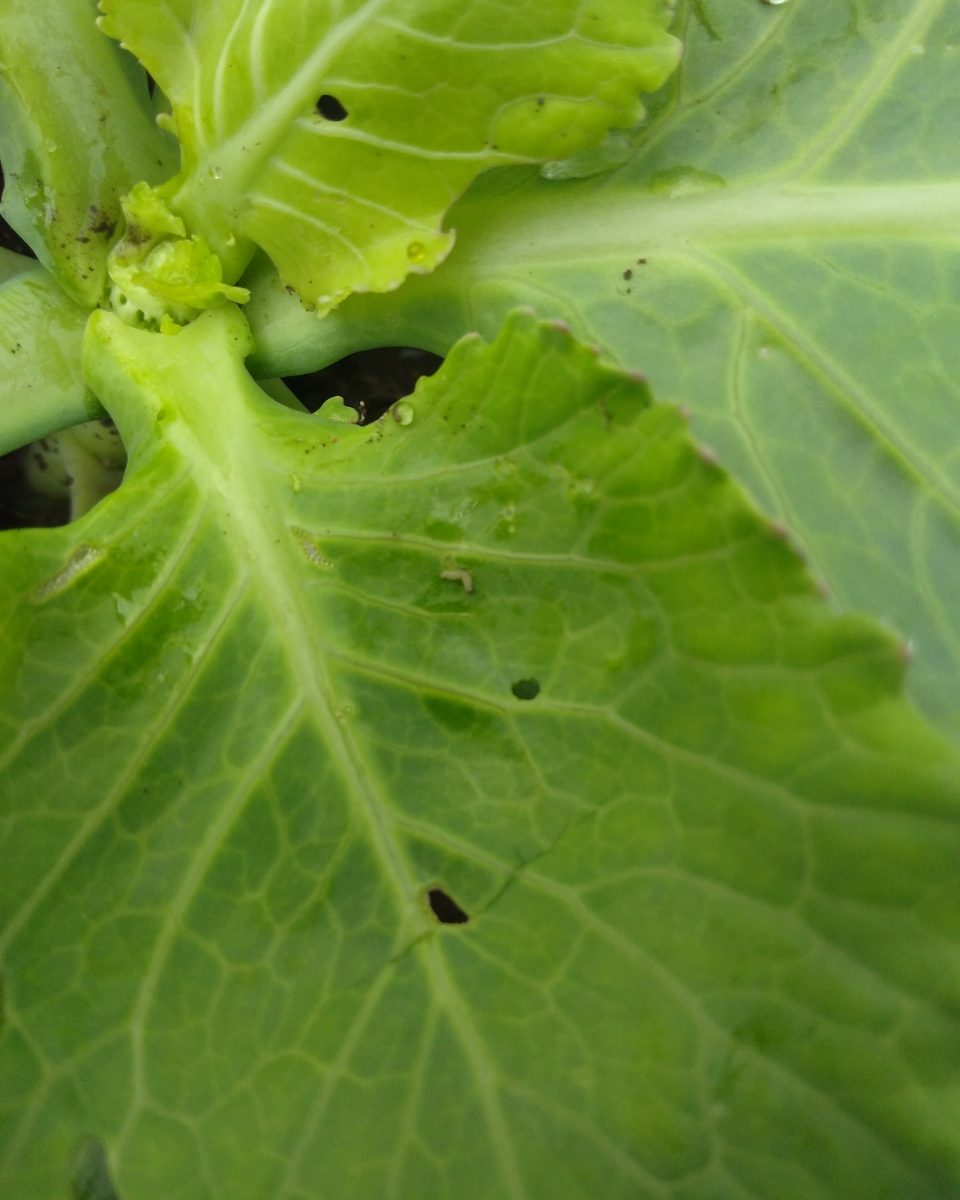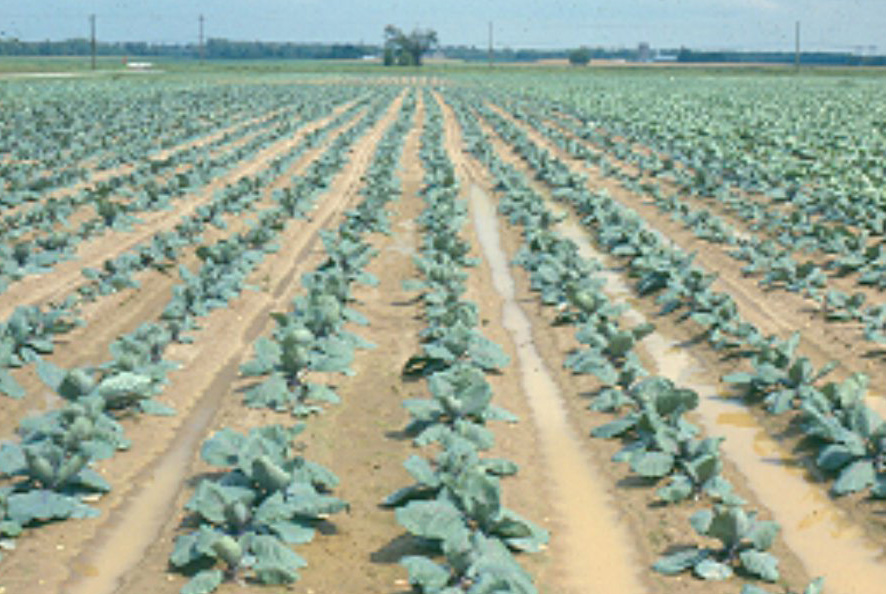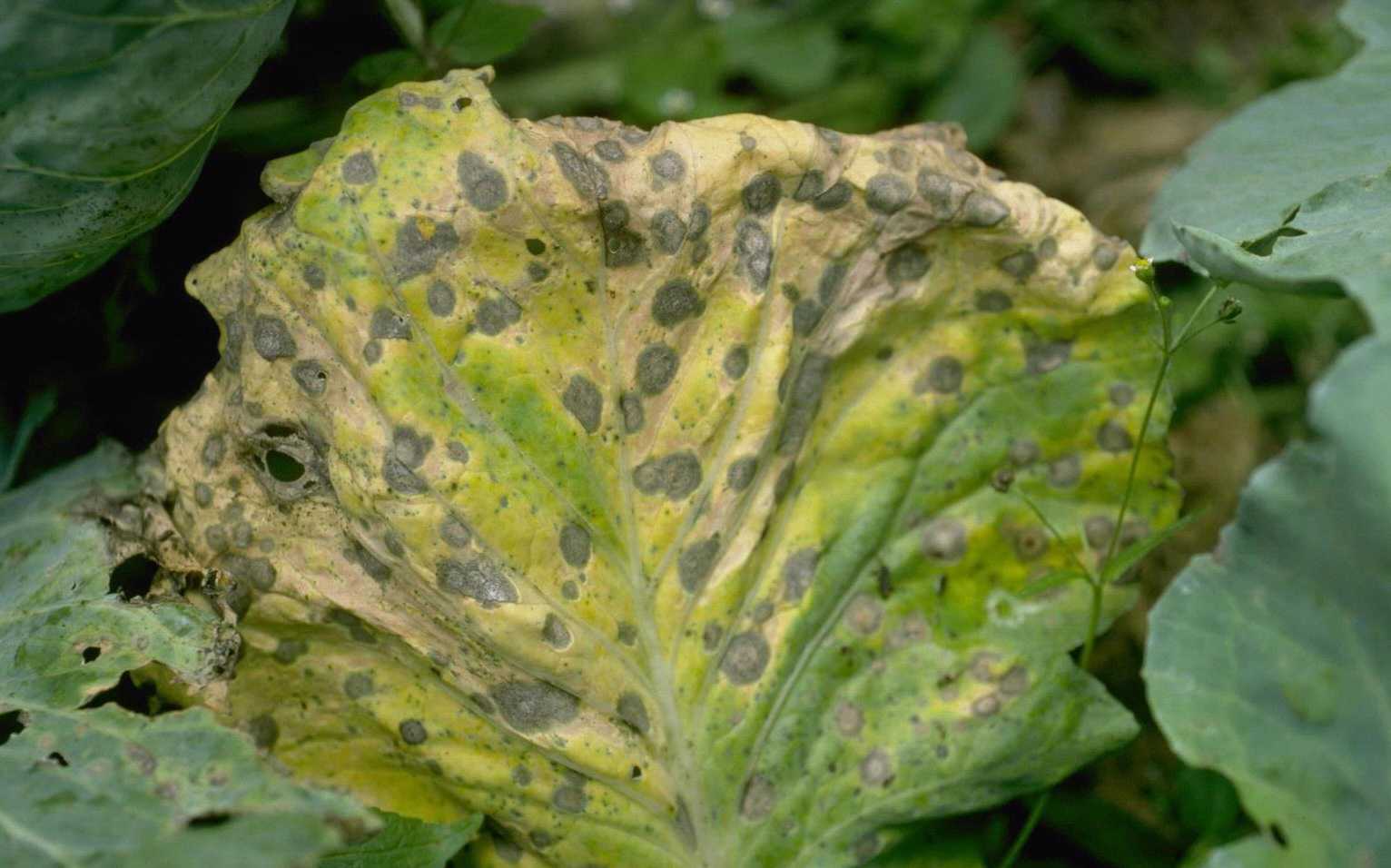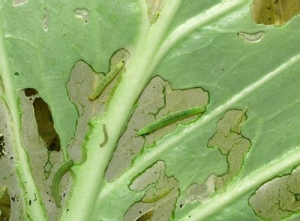Control of Aphids in Cabbage:-
- Nymphs and adults are both soft bodied pear shaped, blackish in colour.
- Colonies of these insects are found on tender shoots and sacks vital sap from the tissues.
- Affected plants remain stunted in growth and curd formation is poor.
- In case of severe infestation plants may completely dry up and die away.
- The aphid produce honey dew which makes the plants sticky and favours the growth of shooty mold.
- As a result of shooty mold a black coating is formed on affected plant parts hindering the photosynthesis and adversely affect the plants growth.
- Slight humidity favours rapid multiplication of this pest.
- Grooming stages of aphids are mostly observed on the lower surface of the leaves.
Control:-
- Spraying of the crop with one of the following insecticide
- Dimethoate 30 EC @ 300 Ml/ Acre
- Quinalphos 25 EC @ 300-400 Ml/Acre
- Profenophas 50% EC @ 400 Ml/Acre
- Destroy plant debris or remove banded grasses/weeds.
- To prevent recurrence of the aphid population granular insecticides. like Phorate 10 G @ 4 kg/ Acre should be applied in the soil.
Like and share with other farmers by clicking on button below
Share







